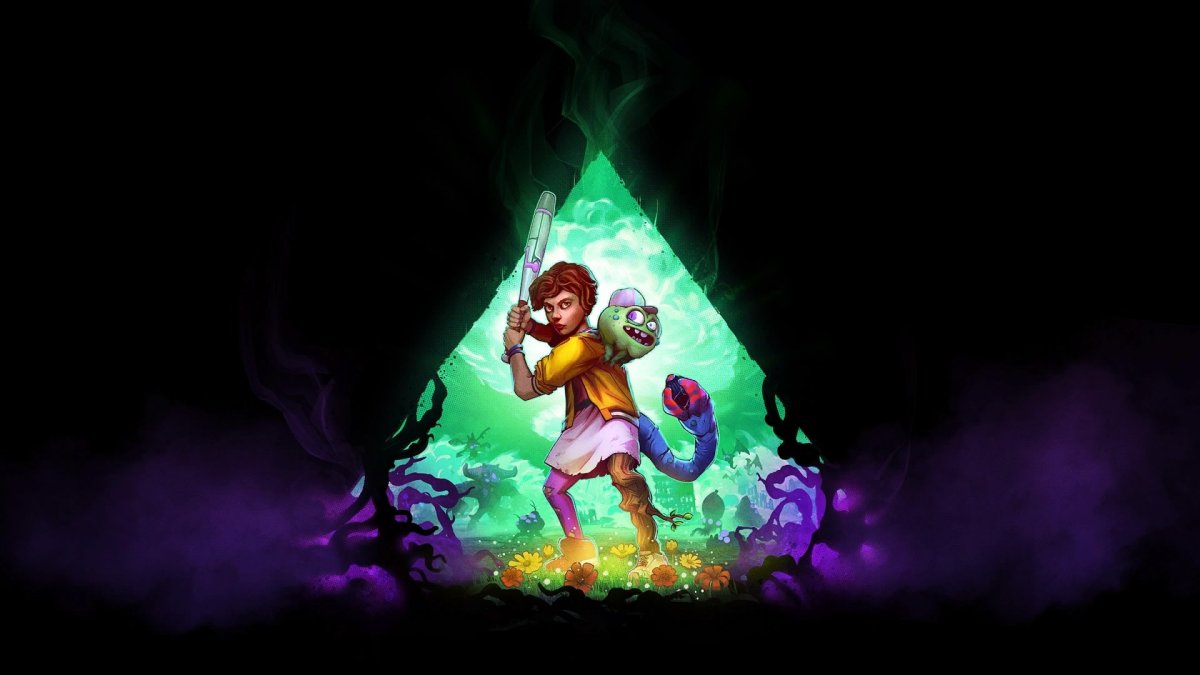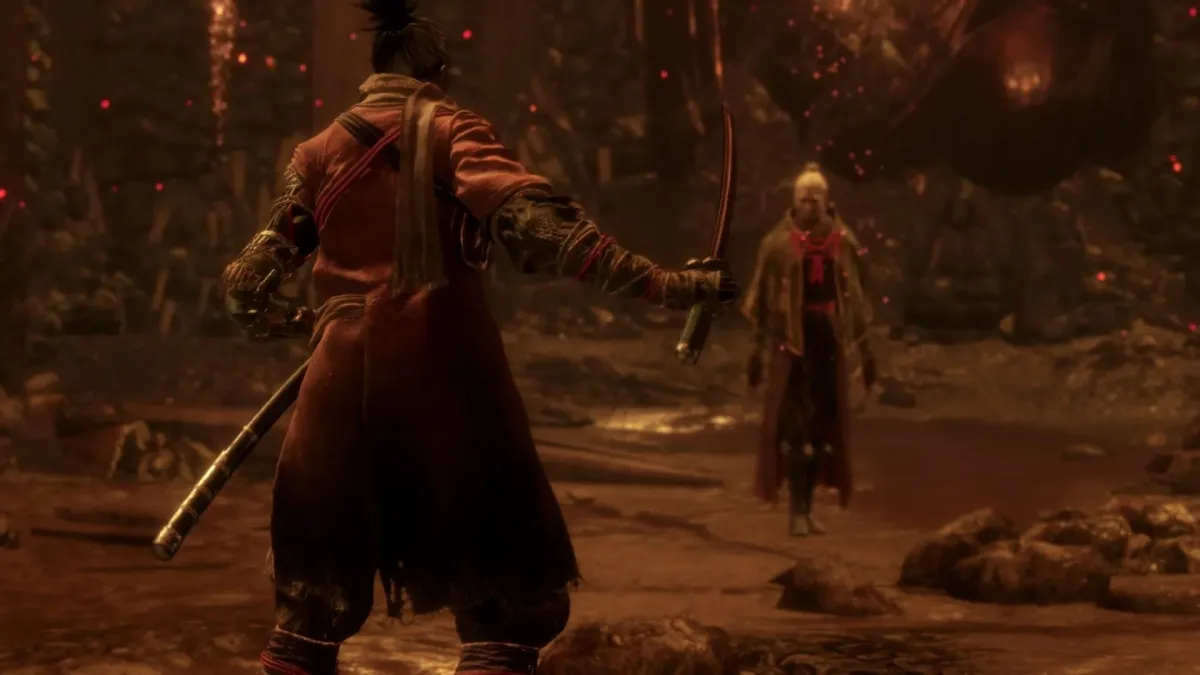For once, truth in advertising
RAD provides an alternate history where at some point in the mid-eighties, the world was annihilated in nuclear hellfire. Eventally, survivors managed to scrape together enough remnants of civilization to start rebuilding society. Culture froze in the wake of the apocalypse, and punk, acid-washed clothing and neon colors have been the height of fashion ever since the bombs fell. Over the following centuries, a group of restoration-minded survivors known as “Menders” managed to construct a vast underground network of machines intended to purify the air and purge the radioactive toxins that had soaked into the environment.
Then the world all blew up again. Sometimes you just can’t catch a break.

RAD (PC, PS4 [reviewed], Xbox One, Switch)
Developer: Double Fine
Publisher: Namco Bandai
Released: August 20, 2019
MSRP: $19.99
I have a confession to make. I’m old, you guys.
I remember doing “Duck and Cover” drills unironically in my classroom in grade school. I didn’t understand it at the time, but I also recall reading news reports (and, uh, humor columns) about the MX Missile gap and the “window of vulnerability” through which evil Russians might attack at any moment. The threat of radioactive devastation wasn’t exactly the foremost thought in my mind back then, but I remember it being a vague concern. Less troubling than being caught stealing cookies, but more pressing than missing Saturday morning cartoons. That’s probably why Double Fine’s latest game resonates so strongly for me.
RAD is a clever triple entendre which encompasses all three of the game’s main features. It’s a short form of “radical,” a defunct slang term that served as a synonym for “excellent” when I was growing up and still evokes synthwave playlists and images of neon mohawks. The more traditional interpretation of radical (say, in the scientific community) refers to dramatic change, something you’ll see a lot of while playing the game. Finally, RAD is also a reference to the game’s main mechanic, which replaces a traditional role-playing game’s experience points with intentional exposure to radiation.
Your character is one of the last surviving humans in a relatively safe area of the wasteland, protected and sheltered by the Mender’s machines. Unfortunately, the machines’ energy is steadily declining, and the village Elder asks for a volunteer to explore the wastes and try to find a replacement water chip reach the Nuclear Throne get the power flowing again. Before you go, he performs a ritual (using a sweet keytar) which will allow your body to adapt to the nuclear remnants beyond the town’s gates. Instead of being harmed by radiation, you’ll now absorb it to enhance your physique. Radiation is difficult to control, however, and the changes it inflicts on you will be unpredictable. Learning to use these mutations and master them to reactivate the Mender’s machinery is the primary focus of the gameplay.
RAD is a single player, third-person action game which borrows some elements from the classic PC game Rogue and its progeny. Maps and enemy placements are randomized for each play session, as are the mutations you’ll experience as you destroy evil mutants and absorb their radioactive life force. Most mutations are beneficial and offer some sort of enhancement to your abilities or defenses, but a few are detrimental and will make fighting a little harder. Just like other Roguelite titles such as Spelunky or Dead Cells, you’ll never play the same game twice.
Most of the mutations are silly, but almost all of them are useful in their own way. I’m not a fan of the Toxic Dump ability which lets me leave a slime trail behind, but especially enjoy Death Roe (which lets me poop out unlimited deadly spiderbabies in what seems like a nod to Family Guy), or the Warhead mutation which launches my flaming skull at enemies (don’t worry, it grows back). You can have up to three “Exo” (attack) mutations active, each of which is bound to a different button and can be upgraded to add another function or increase their power. You can also have a seemingly unlimited number of “Endo” (passive) mutations, most of which will enhance your other abilities or provide immunity to certain types of damage. Some of these will make you weaker, however, and you can’t be sure if an Endo mutation will be good or bad until after you pick it up. No matter what mutations you have equipped, your character will always leave a trail of grass and flowers behind them which can help show where you’ve been and speeds up backtracking if necessary.

I found that RAD played best when I focused on careful exploration. There are several optional toggles which can be set before a run to make the game easier or harder, but even with all of the former activated RAD still provides a considerable challenge. Learning how to react to enemy behavior and use the environment to your best advantage will take several runs, and I was still discovering new techniques hours into my play session.
RAD can be quite difficult, but you’ll unlock several helpful features just by wandering the high plateaus of the Fallow lands. Your character will earn experience at the end of every run whether it was successful or not, and this will unlock passive benefits such as more items for sale in stores, or upgraded starter weapons. If you return to town between levels, you can bank the cassette tapes used as currency in this society. These can be accessed at handy ATMs scattered throughout the wastes, which can help if you’re a little short of cash for that upgrade or healing item you have your eye on. Banking enough tapes will eventually let you buy stuff on credit, albeit at a ruinous markup. Buying things at the shop in town will let the proprietress expand her inventory, offering more useful and powerful items over time. There’s also a couple of other people in town who will offer permanent benefits when their requests are fulfilled.
For those who want an extreme challenge, RAD lets players activate “quirks” which significantly increase the difficulty. One of these makes it so you can’t recover any lost health, while another prevents your character from mutating so that they have to rely exclusively on their melee weapon to defend themselves. For players who want to tip the scales in their favor, it’s possible to start with double the initial amount of health, begin with a ranged attack mutation already available, or increase the amount of damage dealt to enemies. These systems let players tweak the game’s difficulty until it’s just where they want it, which I appreciated.
There aren’t too many features other than the main campaign. A daily challenge which lets everyone explore the same seed and try to attack leaderboards seems a bit tacked-on, especially since there’s nothing preventing players from attempting the challenge repeatedly. Apart from this and the aforementioned balance modifications, RAD doesn’t offer anything other than the main game. Fortunately, that’s different enough to be worth replaying over and over, discovering new entries in the Tome of the Ancients and trying to earn every ending.

Double Fine’s games are known for their sense of humor, and RAD is no exception. Despite the dark subject matter there’s a sense of fun and playfulness throughout; from the item descriptions, to townspeople’s reactions to your ever-changing body, or the animations when you evolve crab legs or bat wings. A deep-voiced announcer punctuates item pickups and particularly creative kills, while a female voiceover explains plot points and describes some enemies the first time you see them.
The aesthetics evoke a more idealized version of the ’80s than I remember, but it’s always fun to explore the garish neon landscape as you slay hordes of many-eyed mutants. By default there’s a CRT filter overlaid on top of the game, complete with VHS tracking errors during loading screens. This can be turned off in the settings, which makes the game look cleaner but does take away a bit of the flavor. Publisher Namco got in on the fun, and you’ll hear classic sound clips from Dig-Dug and Pac-Man as you explore the main hub area.
The music is similarly influenced by the setting, heavy on synthesizers and wailing electric guitars. David Earl’s soundtrack doesn’t reach the same heights as fellow ’80s throwback Far Cry: Blood Dragon, but it gets the job done. I found myself tuning out after a while, but it’s not unpleasant and does help set the mood.

I did run into a few minor problems during my time with RAD. First and most noticeably, load times are quite significant whenever you enter a new area or teleport back to town. This wasn’t a big problem since once you’re in an area you don’t tend to leave it for a while, but I imagine this issue might be more pronounced on the Switch. The game is also fairly short, with only six areas between the start of your quest and the final boss fight. It looks like there are plenty of hidden secrets though, and I know for certain I haven’t yet seen everything RAD has to offer.
I started by playing the PC version, but my aging system wasn’t able to handle it and I had to swap to the PS4 to complete the review. It wasn’t unplayable on my PC, but the framerate wasn’t consistent and the game was a blurry mess. To be clear: this is probably due to the age of my computer and not the fault of the game, but if you do pick up the PC version it might be wise to purchase on Steam so you can request a refund if you run into the same issue I did.
Apart from that, there are all the same issues any Rogue-influenced game will fall prey to. The very randomness which is the genre’s hook means promising runs will frequently be shot to hell by unforeseeable unfavorable circumstances. If you don’t have the masochistic temperament shared by those who already enjoy Roguelikes, RAD isn’t going to change your mind.

I’ve had a lot of fun with RAD, even though I can tell I’ve really only scratched the surface. Trying to work with suboptimal body modifications is pretty funny in and of itself, and discovering new mutations and lore has been intriguing. I don’t think any studio other than Double Fine could have made the post-apocalypse this entertaining.
[This review is based on a retail build of the game provided by the publisher.]










Published: Aug 18, 2019 07:00 am